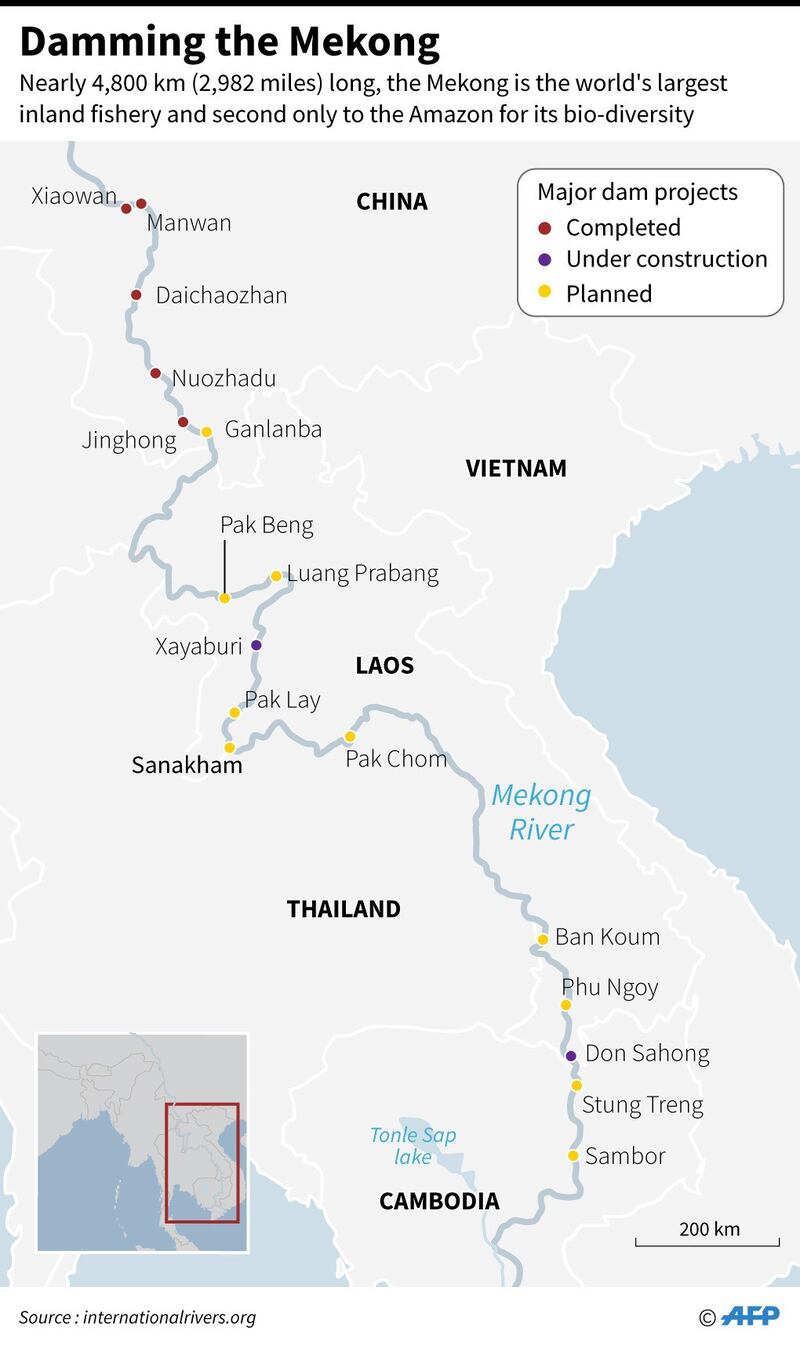Thai power authorities have agreed after a long delay to buy electricity from three hydropower projects in Laos, pushing aside objections from Thai NGOs who say the dams’ operations will harm the ecosystem along the Mekong River.
The Nov. 5 decision by the Thai National Energy Policy Committee opens the way for the country to buy power from the Nam Gneum 3 Dam and from the China-backed Pak Beng Dam and Pak Lay Dam, both located 60-80 km (35-50 miles) from the Thai border.
Speaking to RFA on Tuesday, an official of the Lao Ministry of Energy and Mines called the decision “a step forward for Laos,” as the country had been trying for years to persuade Thailand to buy power from dams built by the one-party communist state either on the Mekong or on its tributaries.
“Laos is going to build all planned dams, including these two dams on the Mekong River,” the official said, speaking on condition of anonymity. “Right now, our ministers are meeting and discussing our plans to sell all our power to Thailand.”
“The Pak Beng Dam and the Pak Lay Dam are ready now to be built at any time,” he said.
Laos had initially planned to sell its power to Vietnam, “but the market there is too small,” the official said, adding, “That’s why construction of these two Mekong River Dams, the Pak Beng and the Pak Lay, had been delayed, but now we’re ready to begin construction.”
Thai environmentalists and other concerned groups quickly responded to the government’s announcement, with one conservation NGO saying that the decision to buy power from Laos had been rushed.
“The Thai government made the decision to buy power from these two dams too quickly,” the Thai Mekong River People’s Network from Eight Provinces said in a Nov. 8 press release, adding that the Commission’s decision was of no help to Thailand, which already enjoys a 50 percent surplus in available power.
The Pak Beng and Pak Lay dams will also lie too close to Thailand, and will harm the Mekong’s ecosystem and the livelihoods of people living along the river, according to the group. “The region and the Mekong River have already been seriously affected by existing dams, more specifically by abnormal and fluctuating flows of water and by droughts and floods,” the Network said.
“The decision to buy power from these three dams shows that the Thai government doesn’t care about the people or the environment in the Mekong River region,” agreed Niwat Roykaew, a member of the Thai conservation group Love Chiang Khong—a district in Thailand’s Chiang Rai province bordering Bokeo province in Laos.
“They, the dams’ developers and the Thai government, have overlooked the dams’ impact. [The region] is already in crisis. Our people have been fighting against this for years,” he said.

'Serious impacts'
All dams including those built along the Mekong have “serious impacts” on the environment and on people living nearby, a social and environmental expert from the National University of Laos said, also asking for anonymity in order to speak freely.
“The Lao government sees only the financial benefit, but not the social and environmental impact,” he said, adding, “Dams don’t benefit the locals very much.”
“It’s impossible to stop the Lao government from building dams, but the government should better manage and control their impact and pay fair compensation” to those displaced by their construction, he said.
The Pak Beng Dam is expected to displace around 6,700 people living in 25 villages in the Pak Beng district of Oudomxay province in northern Laos, while the Pak Lay Dam—located in the Pak Lay district of northern Laos’ Xayaburi province in northwestern Laos—will force the relocation of more than 1,000 residents of 20 villages, sources told RFA in earlier reports.
Laos has built dozens of hydropower dams on the Mekong and its tributaries under its plan to sell around 20,000 megawatts of electricity to neighboring countries by 2030.
Though the Lao government sees power generation as a way to boost the country’s economy as the “batter of Southeast Asia,” the projects are controversial because of their environmental impact, displacement of villagers without adequate compensation, and questionable financial and power demand arrangements.
Reported by RFA’s Lao Service. Translated by Max Avary. Written in English by Richard Finney.
